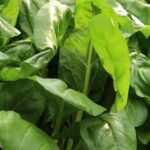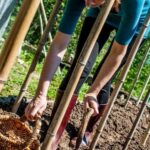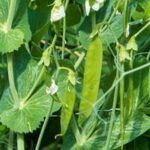Are you interested in starting your own vegetable garden but don’t know where to begin? Vegetable gardening for beginners is a rewarding and fulfilling hobby that allows you to enjoy the fruits of your labor, quite literally.
In this article, we will provide you with all the essential information and tips to help you get started on your vegetable gardening journey. Whether you have a green thumb or are a complete novice, this guide will set you on the right path to successful vegetable gardening.
One of the first steps in starting a vegetable garden is choosing the right location. The success of your garden largely depends on where it is situated, so we will discuss the factors to consider when selecting a location for your garden. Additionally, we will also cover the essential tools and supplies that beginner vegetable gardeners need to have in order to start and maintain their gardens effectively.
In addition, we’ll guide you through the process of selecting the best vegetables for beginner gardeners so that you can choose the plants that are easiest to grow and maintain. By understanding which vegetables are suitable for beginners, you can set yourself up for a successful and enjoyable experience in vegetable gardening.
So, if you’re ready to get your hands dirty and start growing your own fresh produce, keep reading for all the valuable information on how to begin your journey as a vegetable gardener.
Choosing the Right Location for Your Vegetable Garden
When it comes to vegetable gardening for beginners, choosing the right location is crucial for the success of your garden. Before you start planting, take time to carefully select the best spot for your vegetable garden. Ideally, you’ll want a location that receives at least 6-8 hours of sunlight each day. Most vegetables thrive in full sun, so finding an area with ample sunlight is key.
In addition to sunlight, consider the accessibility of water in the chosen location. You’ll want a spot that is close to a water source or easily reachable with a hose for regular watering. Adequate drainage is also important to prevent waterlogging, so avoid low-lying areas that may become waterlogged during heavy rain.
Another factor to consider when choosing the right location for your vegetable garden is the quality of the soil. Conduct a soil test to determine its pH level and nutrient content. Most vegetables prefer well-drained, loamy soil with a slightly acidic to neutral pH level. If the soil in your chosen location needs improvement, you can amend it with organic matter such as compost or aged manure.
Lastly, think about proximity to your home when choosing a location for your vegetable garden. Having your garden close by will make it easier for you to keep an eye on its progress and address any issues that may arise. It will also make harvesting and enjoying the fruits of your labor more convenient.
| Aspect | Consideration |
|---|---|
| Sunlight | At least 6-8 hours of direct sunlight per day |
| Water Accessibility | Proximity to a water source or easy access for regular watering |
| Soil Quality | Adequate drainage and potential need for soil amendment with organic matter |
Essential Tools and Supplies for Beginner Vegetable Gardeners
When starting your journey into vegetable gardening, having the right tools and supplies is essential for success. Here are some of the basic items that beginner vegetable gardeners should have on hand:
1. Garden Trowel: A good, sturdy garden trowel will be your best friend when it comes to planting seedlings, digging small holes, and weeding in your vegetable garden.
2. Hand Pruners: Keeping your plants well-pruned is important for their health and growth. Invest in a pair of hand pruners to easily trim back unruly branches and stems.
3. Watering Can or Hose: Proper hydration is key for a successful vegetable garden. Make sure you have a reliable watering can or hose to keep your plants well-watered, especially during hot summer months.
4. Gardening Gloves: Protecting your hands from dirt, thorns, and other hazards in the garden is important. A durable pair of gardening gloves will help keep your hands safe and clean during planting and maintenance.
5. Organic Fertilizer: Providing proper nutrients to your vegetables is crucial for a bountiful harvest. Look for an organic fertilizer suitable for vegetable gardening to give your plants the nourishment they need.
In addition to these basic tools and supplies, beginner vegetable gardeners may also want to invest in items like a kneeling pad, plant markers, and a sun hat for added comfort and convenience while working in the garden.
| Tool/Supply | Description |
|---|---|
| Garden Trowel | A sturdy tool for planting seedlings, digging holes, and weeding. |
| Hand Pruners | Useful for trimming back branches and stems. |
| Watering Can or Hose | Necessary for keeping plants well-hydrated. |
Selecting the Best Vegetables for Beginner Gardeners
When it comes to vegetable gardening, choosing the right vegetables to grow is essential for beginners. Selecting vegetables that are easy to grow and low maintenance can help ensure a successful first gardening experience. Here are some of the best vegetables for beginner gardeners to consider:
- Tomatoes: Tomatoes are a popular choice for beginner vegetable gardeners because they are relatively easy to grow and can thrive in pots or in the ground.
- Green beans: Green beans are known for their high yield and low maintenance, making them an excellent choice for those new to vegetable gardening.
- Radishes: Radishes are a quick-growing vegetable that can be ready for harvest in as little as three weeks, making them ideal for impatient beginners.
- Carrots: Carrots are another great option for beginners, as they can tolerate a variety of soil types and require minimal care once planted.
In addition to these vegetables, other good options for beginner vegetable gardeners include lettuce, cucumbers, zucchini, and peppers. These vegetables are relatively easy to grow and can provide first-time gardeners with a bountiful harvest.
As you begin your vegetable gardening journey, it’s important to start with vegetables that are well-suited for beginners. By selecting the right vegetables, you can set yourself up for a successful and rewarding gardening experience. Remember to consider factors such as climate, available space, and personal preferences when choosing which vegetables to grow. With the right selection of vegetables, you’ll be on your way to becoming a confident and skilled vegetable gardener in no time.
Preparing and Amending the Soil for a Successful Vegetable Garden
When it comes to vegetable gardening for beginners, one of the most important steps to ensure success is preparing and amending the soil. The quality of your soil directly affects the health and yield of your vegetables, so taking the time to properly prepare it will pay off in the long run. Here are some tips for getting your soil ready for a successful vegetable garden:
- Conduct a soil test: Before you start planting, it’s a good idea to conduct a soil test to determine its pH level and nutrient content. This will help you understand what amendments your soil may need.
- Amend the soil: Based on the results of your soil test, you may need to amend the soil with organic matter such as compost, aged manure, or peat moss to improve its texture and fertility. Incorporating these amendments into the soil will provide a better environment for plant roots to thrive.
- Consider raised beds: If your native soil is poor or compacted, consider creating raised beds and filling them with high-quality topsoil and compost. This can give you more control over the quality of the growing medium.
Taking the time to properly prepare and amend your soil is crucial for setting up a successful vegetable garden. By ensuring that your plants have access to essential nutrients and a healthy growing environment, you will be on your way to enjoying a bountiful harvest.
Remember that each type of vegetable may have specific requirements when it comes to soil quality, so be sure to research the needs of the vegetables you plan on growing in order to provide them with optimal conditions for growth.
By following these guidelines for amending and preparing your soil, beginner vegetable gardeners can set themselves up for success and enjoy a productive growing season.
Planting and Caring for Your Vegetable Garden
When to Plant Your Vegetable Garden
Knowing the best time to plant your vegetable garden is crucial for a successful harvest. Different vegetables have different planting times, so it’s important to do some research or consult with local gardening experts to determine the ideal planting schedule for your specific climate and growing zone. Some vegetables can be planted directly in the ground, while others may need to be started indoors and then transplanted.
Watering and Fertilizing Your Vegetable Garden
Proper watering and fertilizing are essential for the health and growth of your vegetable garden. Most vegetables require consistent moisture, especially during their early stages of growth. It’s important to water your garden deeply but infrequently to encourage stronger root systems. Additionally, using a balanced fertilizer or organic compost can provide the necessary nutrients for your plants to thrive.
Weeding and Mulching
Weeds can quickly take over a vegetable garden, competing with your plants for water and nutrients. Regular weeding is essential to keep them under control. Using mulch around your plants not only helps suppress weeds but also retains moisture in the soil, regulates soil temperature, and adds organic matter as it breaks down. Consider using materials such as straw, shredded leaves, or compost as mulch for your vegetable garden.
By paying attention to these key aspects of planting and caring for your vegetable garden, even beginners can achieve successful results in their gardening endeavors. With proper planning, consistent care, and a little bit of patience, you’ll soon be able to enjoy a bountiful harvest from your own backyard.
Dealing With Common Pests and Diseases in Vegetable Gardening
Identifying Common Pests and Diseases
One of the biggest challenges for vegetable gardening beginners is dealing with common pests and diseases that can affect their plants. It is important to be able to identify these issues early on in order to effectively address them. Common pests such as aphids, caterpillars, and beetles can wreak havoc on a garden if not managed properly. Diseases like powdery mildew, blight, and root rot can also pose a threat to your vegetables.
Natural Pest and Disease Control Methods
For beginner vegetable gardeners, it is best to start with natural pest control methods before resorting to chemical solutions. Introducing beneficial insects such as ladybugs and lacewings can help keep pest populations in check. Using companion planting techniques, such as planting marigolds to repel nematodes, can also be effective in preventing infestations. Additionally, practicing good garden hygiene by regularly removing dead or diseased plant material can help prevent the spread of diseases.
Organic Pest and Disease Management
If natural methods are not sufficient in controlling pests and diseases in your vegetable garden, there are organic options available for beginner gardeners. Organic sprays made from ingredients such as neem oil or insecticidal soap can be used to combat pests without harming beneficial insects or pollinators. For diseases, using organic fungicides made from ingredients like copper or sulfur can help protect your plants without introducing harmful chemicals into your garden.
By being proactive in identifying and managing common pests and diseases in vegetable gardening, beginners can ensure a successful harvest of healthy fruits and vegetables from their garden. Understanding how to effectively address these issues will set the foundation for continued success in vegetable gardening.
Harvesting and Enjoying the Fruits of Your Labor in Vegetable Gardening
As a beginner in vegetable gardening, the most rewarding part of the whole process is finally reaping the fruits of your labor. There’s nothing quite like picking fresh, ripe vegetables straight from your own garden and enjoying them at your dinner table. But harvesting your vegetables at the right time and in the right way is crucial to ensuring that they are as tasty and nutritious as possible.
One of the great things about vegetable gardening is that many varieties can be harvested at different stages of maturity, giving you a longer window of time to enjoy them. For example, leafy greens like lettuce and spinach can be harvested when they are young for a milder flavor, or you can wait until they are fully mature for a stronger taste.
On the other hand, root vegetables such as carrots and radishes should be pulled out when they have reached their full size but before they become overgrown and woody.
When it comes to harvesting your vegetables, it’s important to handle them with care to avoid bruising or damaging them. Use sharp pruners or scissors for harvesting herbs and delicate vegetables, and gently lift root crops out of the ground to prevent breaking or tearing. By following these simple guidelines, you will be able to enjoy the fruits of your labor in vegetable gardening while maximizing the flavor and quality of your homegrown produce.
Tips for Success and Mistakes to Avoid for Beginner Vegetable Gardeners
In conclusion, vegetable gardening can be a rewarding and enjoyable hobby for beginners. By choosing the right location, using essential tools and supplies, selecting the best vegetables, preparing the soil properly, and caring for your garden, you can be on your way to a successful harvest.
However, it’s important to remember that there may be challenges along the way, such as common pests and diseases. By learning how to deal with these issues and following some helpful tips for success, you can overcome any obstacles in your vegetable garden.
One of the most important tips for vegetable gardening beginners is to start small. It’s easy to become overwhelmed by trying to grow too many types of vegetables at once. Instead, focus on a few varieties that are well-suited to your climate and soil conditions. Additionally, it’s crucial to pay attention to proper spacing when planting your vegetables to ensure they have enough room to grow.
Another key tip for success is to stay consistent with watering and fertilizing your vegetable garden. Many beginner gardeners make the mistake of either overwatering or underwatering their plants. Finding the right balance is essential for healthy growth and a bountiful harvest. Additionally, learning about natural pest control methods can help prevent common issues like aphids or caterpillars from damaging your crops.
Frequently Asked Questions
How Do I Start a Beginner Vegetable Garden?
Starting a beginner vegetable garden is an exciting and rewarding project. The first step is to choose a suitable location with access to sunlight and good soil. Then, decide which vegetables you want to grow, considering your local climate and the space available.
What Vegetables Are Easiest to Grow for Beginners?
For beginners, it’s best to start with easy-to-grow vegetables such as tomatoes, lettuce, radishes, and green beans. These plants are relatively low-maintenance and can thrive in a variety of conditions, making them ideal for novice gardeners.
What Is a Good Size Vegetable Garden for a Beginner?
A good size for a beginner vegetable garden depends on the available space and the amount of time you can dedicate to maintenance. Starting small with a 4×4 feet or 4×8 feet plot is manageable and allows you to learn the basics of gardening without feeling overwhelmed.
As you gain more experience, you can always expand your garden in the future.

If you’re looking to get into vegetable gardening, or are just looking for some tips on how to make your current garden better, then you’ve come to the right place! My name is Ethel and I have been gardening for years. In this blog, I’m going to share with you some of my best tips on how to create a successful vegetable garden.





